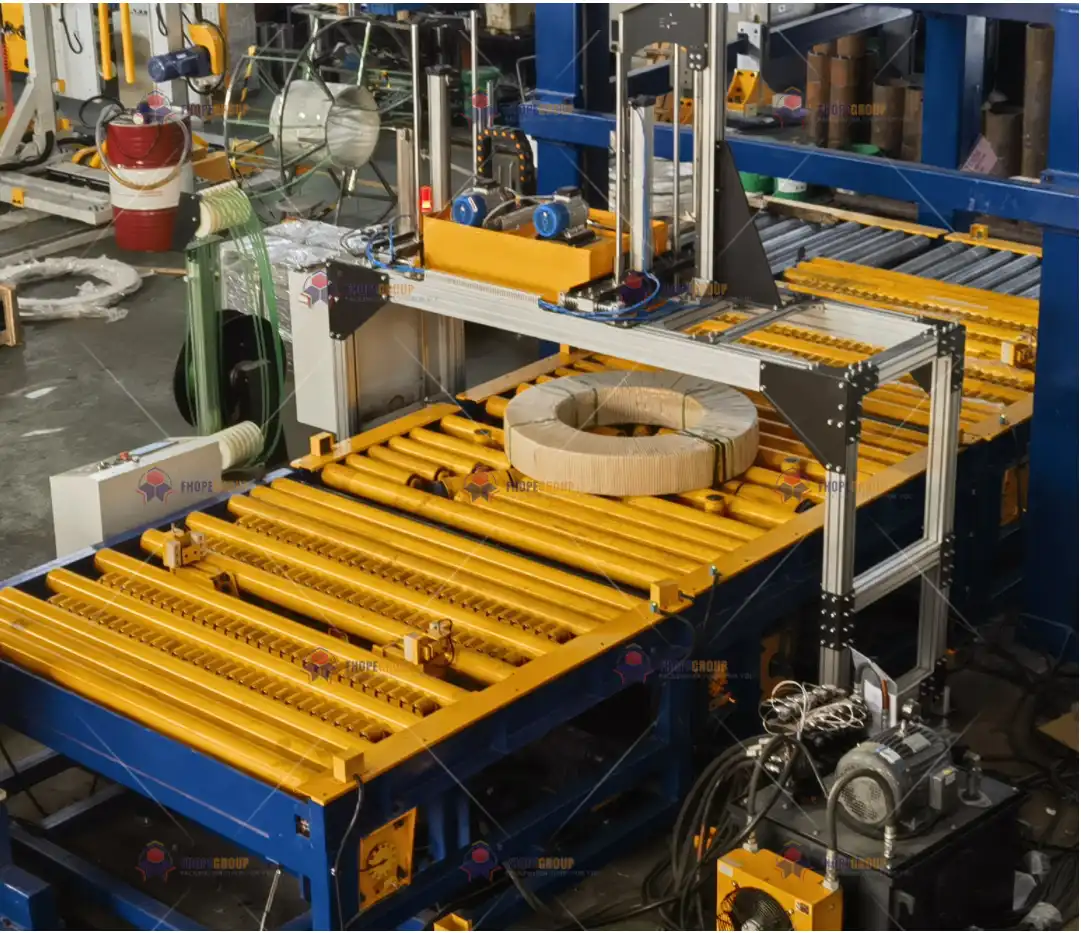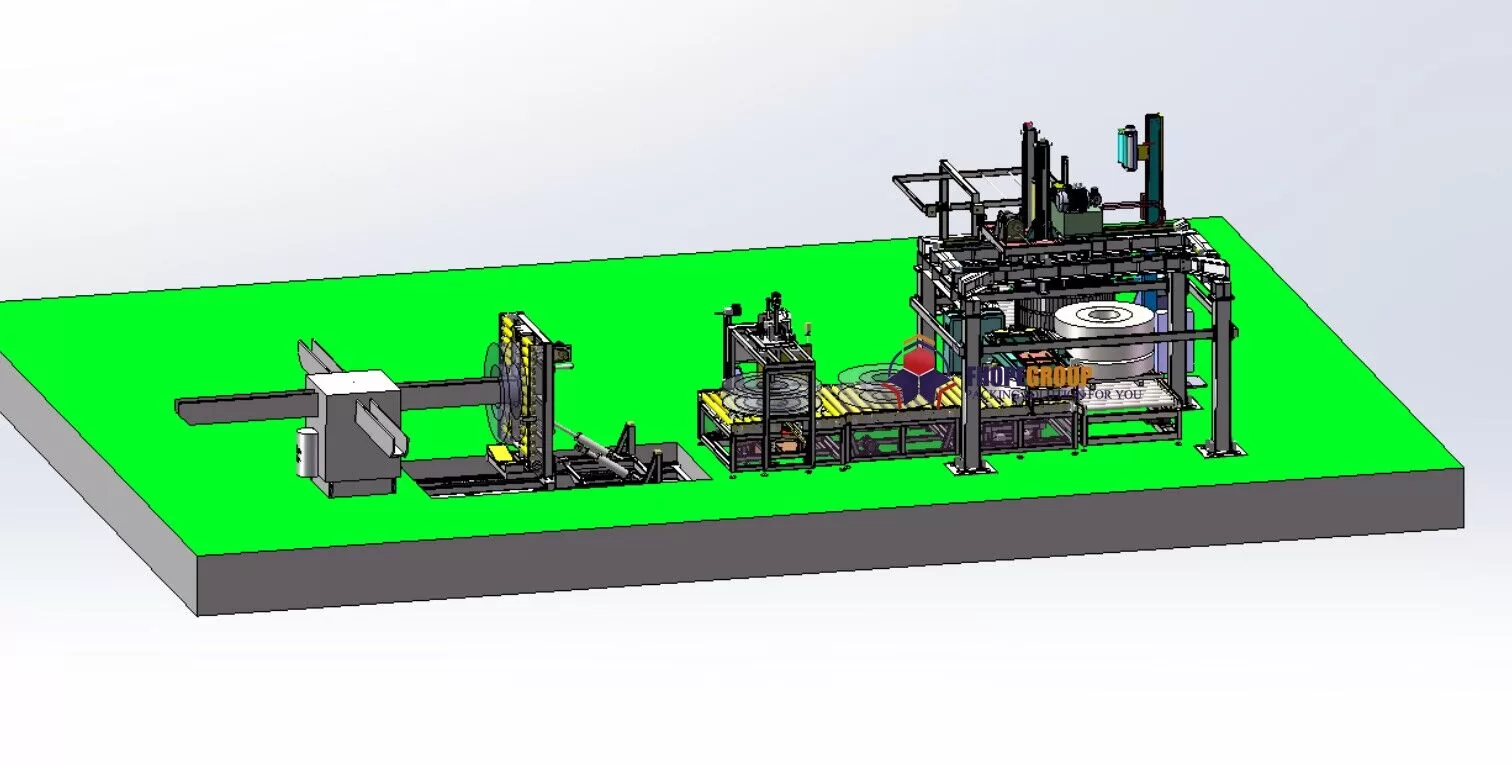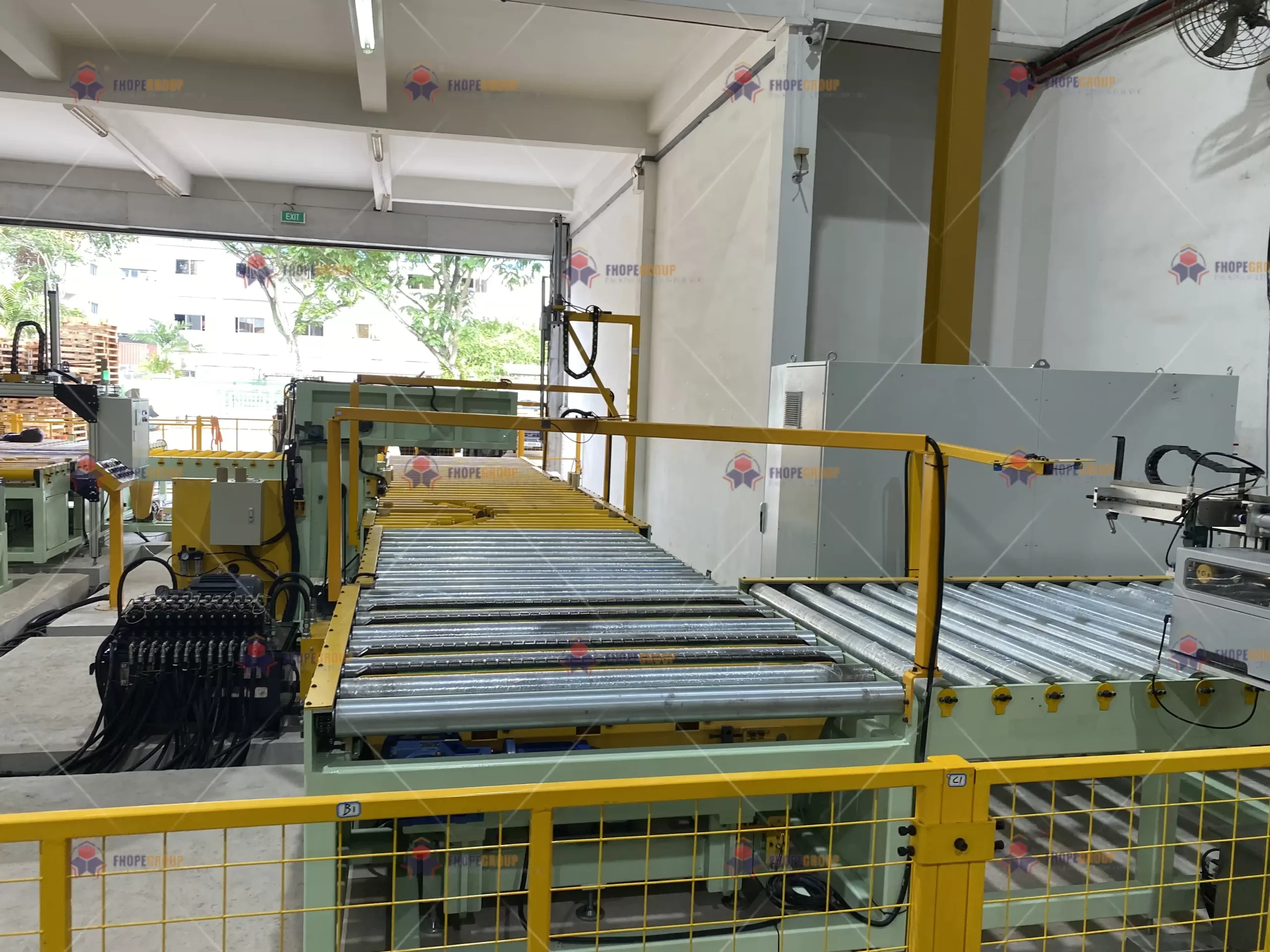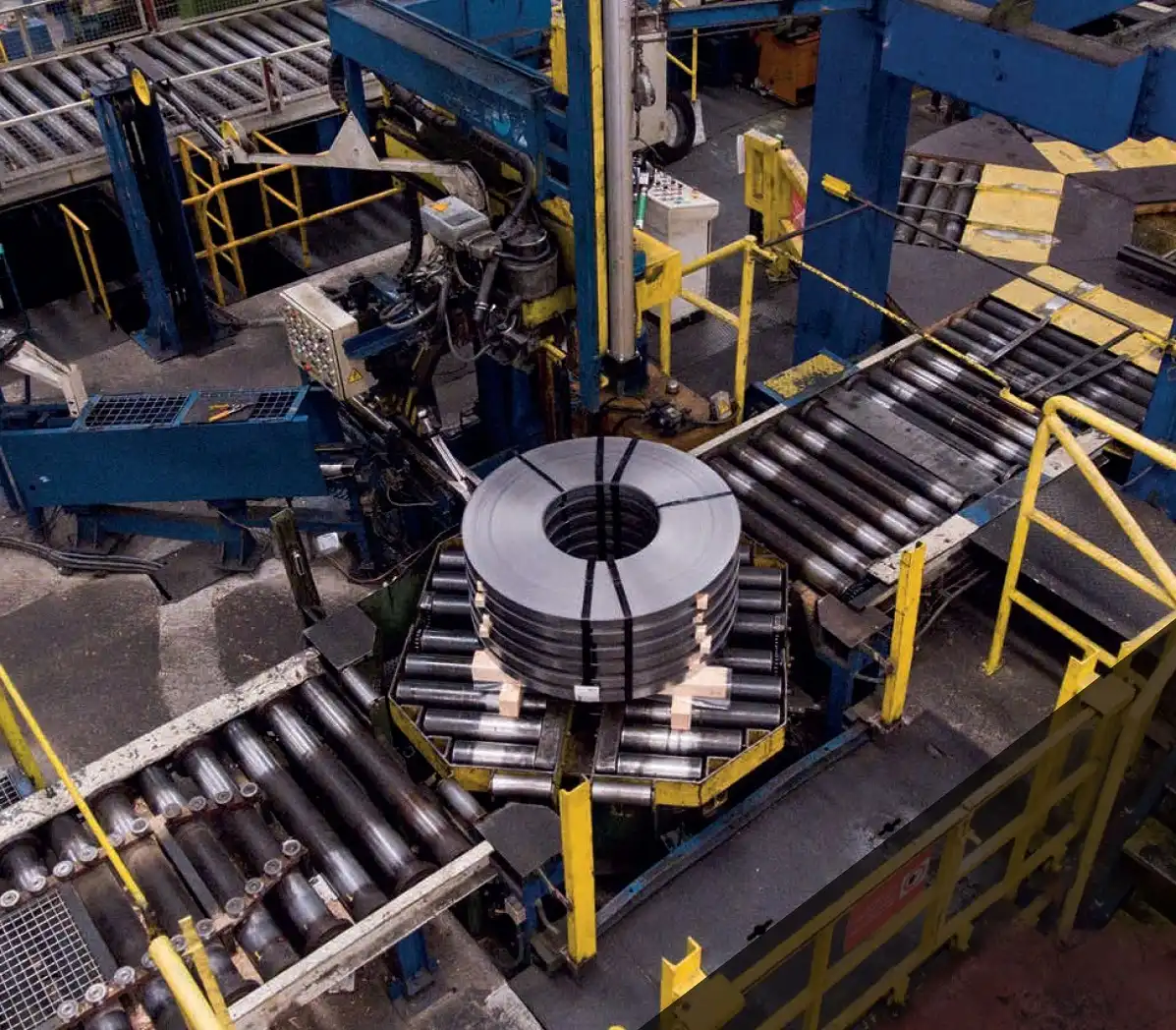Are you tired of unexpected breakdowns halting your coil packaging line, leading to costly downtime and missed deadlines? Imagine a smoothly running line, consistently delivering perfectly packaged coils, day in and day out. The secret? A robust preventive maintenance checklist, your frontline defense against operational disruptions and the key to maximizing your investment.
A preventive maintenance checklist for a coil packaging line is a structured document outlining routine inspection and maintenance tasks performed at regular intervals—daily, weekly, monthly, or annually. It ensures all critical components like conveyors, strapping units, hydraulic systems, and electrical controls are checked, lubricated, and calibrated, preventing unexpected failures and extending the lifespan of the equipment. This proactive approach minimizes downtime, reduces repair costs, and ensures consistent packaging quality.
Ready to transform your coil packaging line’s reliability and efficiency? Dive into our comprehensive guide and checklist to ensure long-term peak performance.
Level 1: Daily and Weekly Checks for Coil Packaging Line Uptime
Imagine starting your workday knowing your coil packaging line is primed for peak performance. But what if hidden issues are lurking, ready to cause chaos? Ignoring daily and weekly maintenance is like skipping breakfast – you might get by, but sustained performance suffers. A consistent routine of Level 1 checks is your operational breakfast, fueling efficiency and preventing costly mid-shift breakdowns.
Daily and weekly preventive maintenance checks on a coil packaging line are crucial for ensuring immediate uptime and preventing minor issues from escalating into major problems. These checks focus on visual inspections, basic lubrication, and functional tests of easily accessible components. Daily tasks often include cleaning debris, checking for leaks, and verifying safety features, while weekly tasks might involve more in-depth lubrication and tightening of fasteners. This proactive approach keeps the line running smoothly, minimizes disruptions, and allows for early detection of potential problems before they cause significant downtime. Level 1 checks are the bedrock of a reliable maintenance program.

But are simple visual checks and lubrication enough? While Level 1 maintenance is essential, it’s just the tip of the iceberg. To truly safeguard your coil packaging line, we need to delve deeper.
Dive Deeper: The ROI of Consistent Level 1 Maintenance
Level 1 maintenance isn’t just about ticking boxes; it’s about realizing tangible returns on your investment. Consider the impact of neglecting even seemingly minor daily checks:
The Domino Effect of Neglect
Imagine a small accumulation of steel dust on a sensor. Initially, it might cause intermittent misreadings, leading to slight packaging inaccuracies. However, if left unchecked, this dust can:
- Obstruct the sensor completely: Halting the packaging process and causing downtime.
- Lead to component overheating: Forcing premature replacement of the sensor and potentially related electronics.
- Compromise packaging integrity: Resulting in damaged coils and dissatisfied customers.
This small issue, easily preventable with a daily cleaning check, can trigger a cascade of problems.
Quantifying the Benefits: A Data-Driven Approach
Let’s look at a hypothetical scenario and quantify the impact of Level 1 maintenance:
| Metric | Without Level 1 Maintenance | With Level 1 Maintenance | Improvement |
|---|---|---|---|
| Downtime Incidents (Monthly) | 5 | 1 | 80% Reduction |
| Average Downtime per Incident | 2 hours | 30 minutes | 75% Reduction |
| Labor Cost per Downtime Hour | \$100 | \$100 | – |
| Lost Production Value per Hour | \$5,000 | \$5,000 | – |
| Monthly Downtime Cost | \$55,000 | \$2,917 | 95% Reduction |
| Preventative Maintenance Labor (Monthly) | \$0 | \$500 | – |
| Net Monthly Savings | – | \$51,583 | – |
Assumptions: Figures are illustrative and will vary based on specific operational contexts.
As the table demonstrates, even a modest investment in daily and weekly Level 1 maintenance can yield substantial cost savings by drastically reducing downtime. The 95% reduction in monthly downtime cost in this example highlights the significant ROI. Beyond direct cost savings, Level 1 maintenance contributes to:
- Increased Throughput: Consistent operation means more coils packaged per shift.
- Improved Product Quality: Reduced packaging errors and damage lead to higher customer satisfaction.
- Enhanced Safety: Regular safety checks minimize workplace hazards.
Level 1 maintenance is not just a checklist; it’s a strategic investment in operational excellence.
Level 2: Monthly and Quarterly Inspections for Proactive Coil Line Care
Daily and weekly checks are your first line of defense, but what about the deeper, less frequent issues that can slowly degrade your coil packaging line’s performance? Think of your car – you check the tires weekly, but you need a monthly or quarterly service for oil changes and more thorough inspections. Level 2 maintenance, performed monthly and quarterly, is that essential service for your coil packaging line, ensuring long-term health and preventing major component failures.
Monthly and quarterly preventive maintenance inspections for coil packaging lines involve more detailed checks and tasks performed less frequently than daily or weekly routines. Monthly tasks typically include in-depth lubrication of critical components, inspection of wear parts like belts and rollers, and calibration of sensors. Quarterly checks extend to alignment verification, detailed electrical system inspections, and hydraulic fluid analysis. Level 2 maintenance aims to identify and address potential issues before they become critical, ensuring sustained performance and preventing costly repairs down the line. This level of proactive care is vital for maximizing the lifespan of your equipment.

But how do you know what to focus on during these Level 2 inspections? And what are the critical areas that demand your attention? Let’s delve into the specifics.
-### Deep Dive: Focusing on Critical Components in Level 2 Maintenance
Level 2 maintenance is about targeted intervention, focusing on components that are prone to wear, degradation, or misalignment over time. Here are key areas to prioritize:
1. Alignment and Calibration Precision
Coil packaging lines rely on precise alignment for smooth operation. Misalignment can lead to:
- Premature wear: Increased friction on belts, chains, and rollers.
- Packaging defects: Inconsistent strapping, wrapping, or stacking.
- Increased energy consumption: Motors working harder to compensate for misalignment.
Level 2 Alignment Calibration Checklist Examples:
- Conveyor Belt Alignment:
- Monthly: Visual inspection of belt tracking, adjust tracking rollers as needed.
- Quarterly: Laser alignment check of conveyor frames and rollers, adjust framework and rollers to manufacturer specifications.
- Strapping Head Alignment:
- Monthly: Check strap feed alignment, adjust guides as needed.
- Quarterly: Verify strapping head alignment with coil center, calibrate strapping head position sensors.
- Wrapping System Alignment:
- Monthly: Inspect film carriage alignment, adjust guide rollers.
- Quarterly: Verify wrapping ring concentricity, calibrate film tension sensors.
2. Wear Part Management: Proactive Replacement
Wear parts are designed to be replaced, but reactive replacement leads to downtime. Level 2 maintenance emphasizes proactive wear part management:
- Belts and Chains: Monthly inspection for wear, cracks, or stretching. Quarterly measurement of belt/chain elongation, replace proactively based on manufacturer recommendations or wear indicators.
- Rollers and Bearings: Monthly inspection for noise, vibration, or play. Quarterly bearing grease replenishment, replace rollers/bearings showing signs of wear or damage.
- Seals and Gaskets: Monthly visual inspection for leaks. Quarterly inspection of seal/gasket condition, replace proactively based on material degradation or leak history.
3. Hydraulic System Health Checks
Hydraulic systems power critical functions like lifting, clamping, and compression. Level 2 maintenance ensures their reliability:
- Hydraulic Fluid Analysis (Quarterly): Fluid sampling and lab analysis for contamination, viscosity, and water content. Fluid change and system flush based on analysis results.
- Hose and Fitting Inspection (Monthly): Visual inspection for leaks, cracks, or wear. Pressure testing of hoses (annually or as needed), proactive replacement of hoses nearing their lifespan.
- Cylinder and Valve Checks (Quarterly): Inspection for leaks, smooth operation, and proper pressure holding. Valve calibration and cylinder seal replacement as needed.
By focusing Level 2 maintenance on these critical areas, you transition from reactive repairs to proactive prevention, significantly enhancing your coil packaging line’s long-term performance and minimizing unexpected disruptions.
Level 3: Annual and Bi-Annual Overhauls for Peak Condition
Daily, weekly, and monthly maintenance keeps your coil packaging line running, but to truly ensure long-term peak performance, you need to think longer-term. Imagine a marathon runner – they train daily, manage weekly mileage, and might have monthly check-ins with a coach, but annually, they need a periodized training plan and potentially a more in-depth physical assessment. Level 3 maintenance, conducted annually and bi-annually, is that comprehensive overhaul for your coil packaging line, ensuring it remains in peak condition for years to come.
Annual and bi-annual preventive maintenance overhauls for coil packaging lines are in-depth, comprehensive inspections and servicing procedures conducted to ensure long-term reliability and optimal performance. Annual tasks include detailed inspections of all mechanical, electrical, and hydraulic systems, thorough cleaning and lubrication, and replacement of critical wear parts based on lifespan projections. Bi-annual overhauls may involve component disassembly for internal inspection, non-destructive testing of critical structures, and software/control system upgrades. Level 3 maintenance is designed to address accumulated wear and tear, identify potential failure points not visible in routine checks, and restore the equipment to a near-new condition, maximizing its operational lifespan. This level of intensive maintenance is an investment in the future of your packaging line.

But what exactly does a Level 3 overhaul entail? And how can you justify the investment in these more intensive procedures? Let’s break down the components and benefits.
Technical Deep Dive: Components of a Level 3 Coil Packaging Line Overhaul
Level 3 maintenance goes beyond routine checks, involving a systematic and detailed approach to revitalize your coil packaging line. Here’s a breakdown of key components:
1. Comprehensive System Inspections and Testing
Level 3 overhauls involve inspections that go beyond visual checks, often employing non-destructive testing (NDT) methods and performance testing:
| System | Inspection/Testing Method | Objective |
|---|---|---|
| Mechanical | NDT (Ultrasonic, Dye Penetrant) | Detect hidden cracks, fatigue, or corrosion in critical structural components. |
| Precision Measurement (Dial Indicators, CMM) | Verify dimensional accuracy and wear in critical components like gears and shafts. | |
| Electrical | Insulation Resistance Testing | Identify insulation degradation in wiring and motors, preventing electrical faults. |
| Thermal Imaging | Detect hotspots in electrical panels and connections, indicating potential overload or loose connections. | |
| Hydraulic | Pressure and Flow Testing | Verify pump performance, valve functionality, and system pressure integrity. |
| Fluid Analysis (Advanced Spectrometry) | Detailed analysis of hydraulic fluid for wear metals, additives, and contamination. | |
| Control Systems | PLC Logic Analysis | Review program logic for efficiency and identify potential areas for optimization. |
| Sensor Calibration and Verification | Ensure accuracy and reliability of all sensors critical for process control. |
2. Deep Cleaning and Component Refurbishment
Level 3 overhauls include thorough cleaning and refurbishment to remove accumulated contaminants and restore components to optimal condition:
- Disassembly and Cleaning: Disassembly of key components like gearboxes, hydraulic valves, and strapping heads for internal cleaning and inspection.
- Component Refurbishment: Reconditioning or rebuilding worn components like cylinders, pumps, and motors instead of outright replacement (where feasible and cost-effective).
- Repainting and Corrosion Protection: Stripping and repainting corroded areas of the machine frame and components, applying rust inhibitors and protective coatings.
3. Software and Control System Upgrades
Level 3 maintenance is an opportunity to modernize and optimize your control systems:
- Software Updates and Upgrades: Updating PLC software, HMI interfaces, and drive firmware to the latest versions, improving performance and security.
- Control System Optimization: Fine-tuning control parameters, optimizing motion profiles, and implementing energy-saving algorithms.
- Integration of Predictive Maintenance Features: Adding sensors and data acquisition systems to enable condition monitoring and predictive maintenance capabilities for the future.
By executing a Level 3 overhaul, you are not just maintaining your coil packaging line; you are reinvesting in its future, ensuring continued peak performance, extended lifespan, and optimized operational efficiency. While requiring a larger upfront investment, Level 3 maintenance delivers significant long-term ROI by preventing catastrophic failures and maximizing the productive life of your valuable equipment.
Level 4: Implementing a CMMS for Streamlined Preventive Maintenance
Manual checklists are a start, but in today’s data-driven manufacturing environment, relying solely on paper-based systems for preventive maintenance is like navigating with a paper map in the age of GPS. You can get there, but it’s inefficient, prone to errors, and you’re missing out on valuable real-time insights. A Computerized Maintenance Management System (CMMS) is the GPS for your maintenance program, guiding you to optimized performance and proactive asset management.

Implementing a CMMS elevates your preventive maintenance program from reactive to proactive. It centralizes maintenance schedules, checklists, work orders, and asset data, enabling automated task assignment, tracking, and reporting. A CMMS streamlines workflows, reduces paperwork, improves communication between maintenance teams, and provides valuable data analytics to optimize maintenance strategies and predict potential equipment failures, ultimately maximizing coil packaging line uptime and efficiency. A CMMS is the cornerstone of a modern, effective maintenance strategy.
A CMMS empowers you to move beyond basic checklists and unlock the full potential of preventive maintenance. It provides the tools and data to make informed decisions, optimize your maintenance strategy, and achieve true operational excellence.
Conclusion
Implementing a multi-level preventive maintenance checklist is not just about avoiding breakdowns; it’s about building a robust foundation for sustained coil packaging line performance. From the daily Level 1 checks that ensure immediate uptime to the in-depth Level 3 overhauls that guarantee long-term reliability, each level plays a crucial role. And by leveraging a CMMS to streamline your maintenance efforts, you can move from reactive fixes to proactive prevention, maximizing efficiency and minimizing costs. Embrace lubrication intervals and a comprehensive maintenance strategy to unlock the full potential of your coil packaging line and ensure years of peak performance. Explore how a dedicated coil packing line solution can further enhance your operations.










